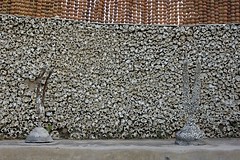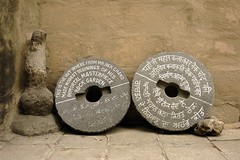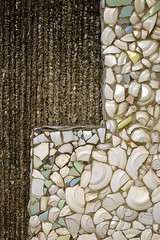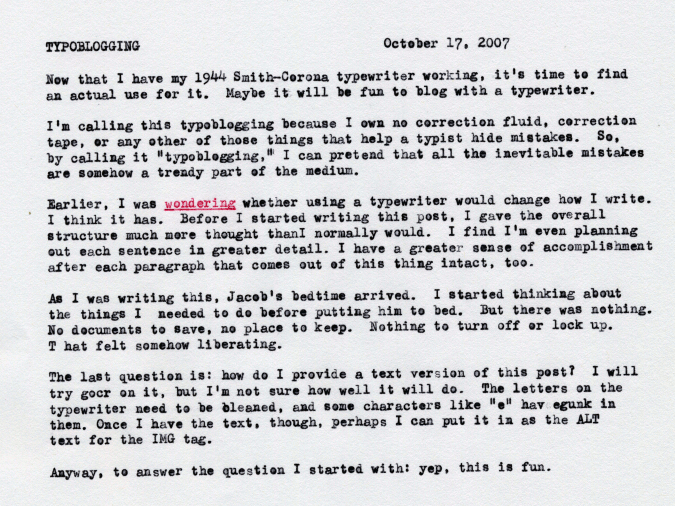
For those who aren t clinically dead, you may have heard of the BBC . The BBC are the state-ish-funded TV network in the UK, and the country s biggest broadcaster, alongside three other major terrestrial broadcasters who make their content widely available without payment ITV, Channel 4, and Five. These broadcasters also make some or all of their programming available for streaming over the Internets usually their home-grown programming only, not licensed stuff from America.
Now, once upon a time, the online functionality was mostly offered via a proprietary P2P-and-DRM-based system called
Kontiki. Kontiki was unpopular for various reasons for example, it was Windows-only, and banned by several Internet providers due to the use of P2P (e.g. I know such technology is still banned on the University of Oxford network). As a result, this lead to the introduction and eventual replacement of browser-based streaming solutions, starting with the changes made to BBC s iPlayer. iPlayer is nowadays a combination of an Adobe Flash service for web surfers, an unencrypted MP4 streaming service for users of mobile devices such as iPhones, and as of a couple of weeks ago, has streaming support built directly into the PlayStation 3 s user interface too. Oh, and on the PC, it supports DRM-based downloading courtesy of the Adobe Air platform, on Windows, Mac, and Air-capable (x86) Linux. Channel 4 s service 4od, and Five s Demand Five, are also based on Adobe Flash, and streaming-only. They re basic and functional.
The final interesting one here is ITV s ITV Player. ITV Player was, until about a week ago, the only non-Flash service, instead making use of Microsoft Silverlight. They have now changed to be Flash-based, like their peers, meaning the entire market mandates use of the Adobe Flash plugin or, at a push, command-line utilities or browser plugins which grab the raw video files from the broadcasters servers, in violation of their licenses. Why is this interesting? Well, when ITV Player used Silverlight, we could watch TV using Free Software: Novell Moonlight 2.0 Beta 1.1 and above worked fine with it, on i386 and AMD64 (and other architectures with a recompile). Now that it s using Flash rather than Silverlight, where do we stand for watching streaming TV legitimately with Free Software? Let s take a peek!
Firstly, some preamble. I m running Ubuntu Jaunty, and I hand-compiled a SVN (I think SVN? Maybe Bzr) snapshot of Gnash revision 11485 to ensure I had an up-to-date view of proceedings. It definitely seems to be working, as I m introduced to the world of Flash advertising via Gnash, and Youtube.com also works, more or less. And I m not discussing Adobe s Flash plugin here, for various reasons:
- It s proprietary. Boo.
- It s i386-only in several instances a beta of an AMD64 plugin exists, but your browser will crash on BBC iPlayer sites if you have the iPlayer Adobe Air app installed, as Air is i386-only. And the packages in Ubuntu install the i386 plugin alongside the abominable and crashy nsPluginWrapper.
- Did I mention it was proprietary? If the only way to surf the web on a Free OS is with proprietary software, then we re not doing very well.
So, Gnash it is. Firstly, it s a PITA to compile, as upstream seem to have misunderstood how AutoFoo works i.e. it detects that you don t have headers installed for certain features, and tells you so, yet still enables those features at configure-time (and obviously fails when building). Hey guys, if I don t have qapplication.h, take the hint and disable KDE support for me like every other bloody app does. With that out of the way, let s get to it!
BBC iPlayer
Well, what does the landing look like?

BBC iPlayer Landing
Looks fine to me! Let s try playing a show!

BBC iPlayer Playback
Oh. Um Never mind, then. Seems iPlayer s JavaScript to detect Flash presence doesn t pick up on Gnash, and it bails out. Score so far: 0/1
Demand Five
Another former Kontiki partner, how do these guys fare?

Demand Five Landing
Hey, that looks pretty good to me! Perhaps we re onto a winner this time?

Demand Five Playback
Poot. Gnash is definitely being invoked see the context menu there but it sure isn t doing anything useful. Score: 0/2
Channel 4 4od
How do those hip cats at Channel 4 fare?

Channel 4 4od Landing
Hm Gotta confess, not feeling too hopeful about this one

Channel 4 4od Playback
Oh, well, even worse than iPlayer. What you folks might not recognise is the missing Play buttons which are supposed to be to the right of the program descriptions in that list of episodes. Presumably more Javascript/Flash interop failure. 0/3
ITV Player
Last, but not least, how does the newest entrant into Microsoft-free streaming fare?

ITV Player Landing
Now, now, in fairness, it s always been this bad, even when they used Silverlight weirdos that they are, ITV have always used Flash for their navigation, even when they used Silverlight for playback. The Flash-based navigation you (don t) see here is barely any better even with the proprietary Flash plugin. What the proprietary plugin does NOT do, however, is consume the 750 or so meg of RAM that Gnash did when sat idle on this screen. I mean, that s not a problem, that s why I have 6 gig in here, but still, not wise on Wifey s netbook.

ITV Player Playback
Oh. Well then. 0/4 it is.
So?
What annoys me here isn t so much that nothing works. I m used to there being temporary gaps in Free Software functionality, that s pretty normal. But I m greatly vexed that one of these four
used to work on a Free platform, and now it doesn t and that places like UbuntuForums are filled with people
celebrating that fact. Celebrating that ITV have stopped using the evil nasty Microsoft system which happened to have a functional Free replacement and that they ve now moved to a non-Microsoft system which mandates a proprietary plugin. It s not the first time either Major League Baseball in the USA used to use Silverlight for their HD streaming, and now they use a combination of Flash and a proprietary Windows-only extension to Flash to make it load WMV files this is considered a victory. It really isn t. We should NEVER be forced to use Proprietary software in order to surf the web yet now we ve gone from having access to 25% of the UK s streaming TV services via Free Software to 0% of them, and people are happy about it.
So, I want you to think long and hard about this question, one which seems to get the oddball answer far too often:
What is more important promoting Free Software, or demoting Microsoft Corp?
 code
here
code
here
 For those who aren t clinically dead, you may have heard of the BBC . The BBC are the state-ish-funded TV network in the UK, and the country s biggest broadcaster, alongside three other major terrestrial broadcasters who make their content widely available without payment ITV, Channel 4, and Five. These broadcasters also make some or all of their programming available for streaming over the Internets usually their home-grown programming only, not licensed stuff from America.
Now, once upon a time, the online functionality was mostly offered via a proprietary P2P-and-DRM-based system called
For those who aren t clinically dead, you may have heard of the BBC . The BBC are the state-ish-funded TV network in the UK, and the country s biggest broadcaster, alongside three other major terrestrial broadcasters who make their content widely available without payment ITV, Channel 4, and Five. These broadcasters also make some or all of their programming available for streaming over the Internets usually their home-grown programming only, not licensed stuff from America.
Now, once upon a time, the online functionality was mostly offered via a proprietary P2P-and-DRM-based system called 







 Umh, is today the quote your neighbour day? No? Thought so... Still, for the second time in a couple of minutes, I'm quoting/translating here. This time, I'm quoting a short text posted by fellow Mexican Debian guy
Umh, is today the quote your neighbour day? No? Thought so... Still, for the second time in a couple of minutes, I'm quoting/translating here. This time, I'm quoting a short text posted by fellow Mexican Debian guy 













 The problem
On a couple of Debian Etch systems we have a
The problem
On a couple of Debian Etch systems we have a

 Note: red underlined links are clickable
Note: red underlined links are clickable